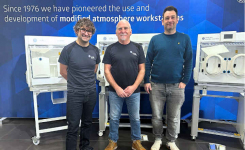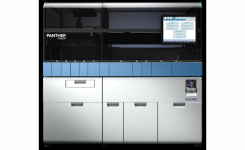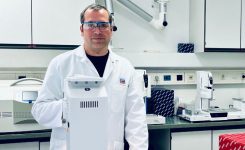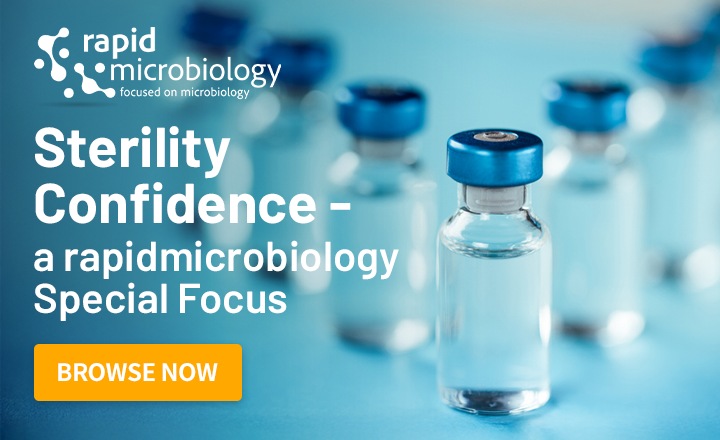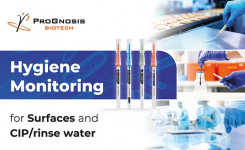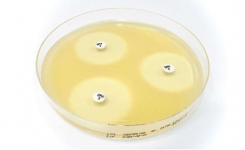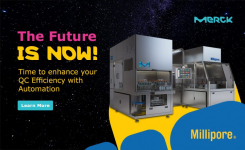
Key Points
- Different microbes can grow under a wide range of gaseous conditions
- Optmimal growth conditions are a key requirement for rapid screening and identification
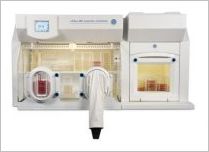 In nature there are probably infinite combinations of hydrogen (H2), oxygen (O2), nitrogen (N2) and carbon dioxide (CO2), representing a huge diversity of localized environmental conditions supporting equally diverse populations of micro-organisms. Oxygen has not always been a component of Earth's atmosphere, indeed amongst the prokaryotes evolution occurred without it. Micro-organisms occupying these constantly changing ecological niches are forced to adapt to survive, and represent an equally daunting challenge to the taxonomist. It is therefore helpful to apply a relatively loose classification to the description of such variation, and working definitions generalize to anaerobic (oxygen toxicity) or aerobic (oxygen tolerant). Those organisms that can survive in both conditions are referred to as facultative or microaerobic. There are also some important organisms that are CO2 dependent or capnophilic. Toxic oxygen species (oxygen free radicals and peroxides) are produced as a result of normal metabolic activity and strict anaerobes do not express the detoxifying enzyme systems that protect the aerobic organisms. Micro-organisms that are capable of surviving anaerobic or microaerobic conditions can be important as agents in causing infectious diseases and food spoilage. Cultivating such organisms requires the creation and maintenance of appropriate conditions, including the gaseous environment, on a scale appropriate to the laboratory. Various mechanisms for achieving this are described below.
In nature there are probably infinite combinations of hydrogen (H2), oxygen (O2), nitrogen (N2) and carbon dioxide (CO2), representing a huge diversity of localized environmental conditions supporting equally diverse populations of micro-organisms. Oxygen has not always been a component of Earth's atmosphere, indeed amongst the prokaryotes evolution occurred without it. Micro-organisms occupying these constantly changing ecological niches are forced to adapt to survive, and represent an equally daunting challenge to the taxonomist. It is therefore helpful to apply a relatively loose classification to the description of such variation, and working definitions generalize to anaerobic (oxygen toxicity) or aerobic (oxygen tolerant). Those organisms that can survive in both conditions are referred to as facultative or microaerobic. There are also some important organisms that are CO2 dependent or capnophilic. Toxic oxygen species (oxygen free radicals and peroxides) are produced as a result of normal metabolic activity and strict anaerobes do not express the detoxifying enzyme systems that protect the aerobic organisms. Micro-organisms that are capable of surviving anaerobic or microaerobic conditions can be important as agents in causing infectious diseases and food spoilage. Cultivating such organisms requires the creation and maintenance of appropriate conditions, including the gaseous environment, on a scale appropriate to the laboratory. Various mechanisms for achieving this are described below.
Technology and Applications
Producing a defined atmospheric environment in the laboratory requires an enclosed space into which the required combination of gases can be generated and reliably maintained. Solutions to this challenge range from flexible pouches through rigid jars up to complete incubators and workstations.
Pouches and jars are designed to accommodate a relatively small number of plates (1-15) and offer the laboratory the flexibility to handle samples with small numbers of anaerobic test requests. The pouches and jars, once filled, are placed in standard incubators. For larger numbers of requests and also laboratories routinely dealing with anaerobes, then the larger workstations offers the scope to handle several hundred plates.
The required atmospheres in pouches and jars are usually generated by the inclusion of gas generating sachets. These sachets can create anaerobic (0% O2), microaerobic (up to 6% O2) and CO2 rich conditions. Original versions of this technology contained, e.g., sodium borohydride, sodium bicarbonate and tartaric acid. Water and a low temperature catalyst are required to drive the reaction and hydrogen gas is evolved. Later versions typically contain the active ingredient ascorbic acid that reacts exothermically with the oxygen in the air to create the required environment. No water is required and hydrogen gas is not evolved.
Gas jars can also be filled from cylinders via simple and portable gas mixing generators that will replace the standard atmosphere with fixed combinations of gases or user-defined combinations. This technique avoids the time delay associated with the gas generating sachets in reaching the target gas concentration.
Anaerobic and microaerobic workstations / chambers offer the laboratory the facility to manipulate and incubate samples all within the chosen environmental conditions. Gases are mixed to user defined combinations and are maintained throughout the incubation period and subsequent protocols, e.g., genomic studies.
Pouches and jars are self-contained, simple, disposable systems allowing small numbers of samples to be handled, offering flexibility to smaller laboratories performing routine anaerobic analyses.
Where R&D projects require more flexibility, gas jars filled from gas cylinders quickly and reproducibly create the target environment.
Summary
Anaerobic and microaerobic workstations provide for larger throughput and offer the laboratory the benefits of user defined environments that allow for full sample manipulation. This means that entire projects can be carried out in the chosen atmosphere. Sample handling, incubation, follow-up studies and subsequent procedures, often genetic characterization, can be accommodated without variation in the environment.
Get the latest updates in Rapid Microbiological Test Methods sent to your email? Subscribe to the free rapidmicrobiology eNewsletter






